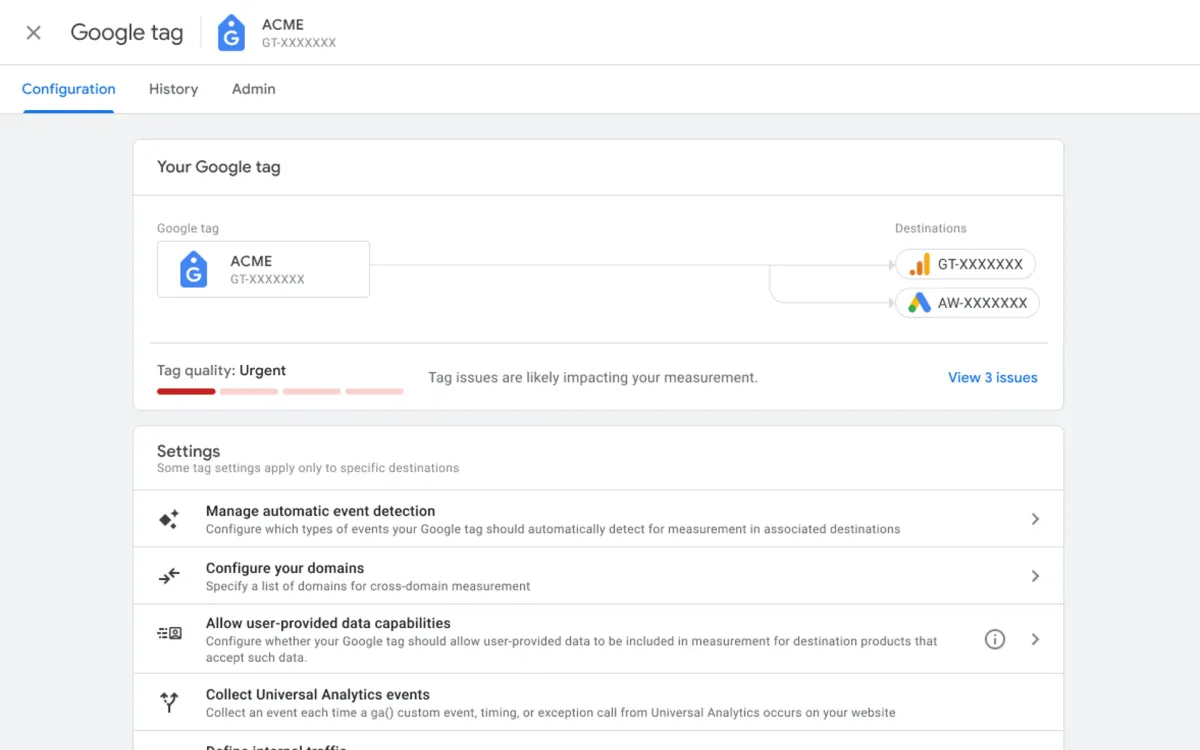
Google has rolled out significant updates to its Tag Diagnostics tool, introducing new features to help website owners and marketers identify and resolve issues with their Google tags. The announcement, made on October 11, 2024, comes as part of Google's ongoing efforts to improve data quality and measurement accuracy for its users.
The Tag Diagnostics tool, accessible through Google Ads, Google Analytics, and Google Tag Manager, now includes two new diagnostics:
- Tag Has Stopped Sending Data
- Tag Found Too Low on Page
These additions aim to address common issues that can impact data collection and website performance.
Tag has stopped sending data
This new diagnostic appears when the Google tag has ceased transmitting data within the last 48 hours. According to Google's documentation, users encountering this issue should utilize Tag Assistant to verify the correct installation of the tag across their website pages.
Tag found too low on page
The second new diagnostic alerts users when tags are positioned suboptimally on their web pages. Google emphasizes that tag placement significantly influences load times and activation speeds. Tags positioned too far down the page may lead to signal loss, potentially compromising website measurement functionality and performance.
New tag quality status: No recent data
In addition to the new diagnostics, Google has introduced a new tag quality status called "No Recent Data." This status appears when the Google tag hasn't been detected in the past 48 hours, signaling to users that they may need to review their setup.
Importance of tag placement
The introduction of the "Tag Found Too Low on Page" diagnostic underscores the critical nature of tag placement in web development and analytics. Proper tag positioning ensures:
- Faster load times
- Quicker tag activation
- Reduced signal loss
- Improved measurement accuracy
Website owners and developers are advised to review their tag implementation to ensure optimal placement for maximum effectiveness.
Existing tag quality statuses
The Tag Diagnostics tool continues to provide various tag quality statuses to highlight detected issues and their severity:
- Excellent: No issues detected
- Good: No issues detected, but recommendations provided for improvement
- Needs Attention: Non-critical issues requiring attention
- Urgent: Critical issues requiring immediate attention
Additional diagnostics
The Tag Diagnostics tool offers a range of other diagnostics to help users identify and resolve issues with their tagging setup:
- Additional domains detected for configuration
- Config command out of order
- Missing conversion linker
- Some pages missing consent for EEA users
- Website/App missing EEA consent for ads personalization
- Consent mode installation out of order
- Verify consent mode set up as 0% consent rate detected
- 0% consent rate detected in some regions
Gradual rollout and availability
Google notes that the Tag Diagnostics feature is being rolled out gradually and may not be immediately available in all accounts. Users are encouraged to check their Google tag settings regularly for access to these new features.
Accessing tag diagnostics
To access the Tag Diagnostics tool, users can follow these steps:
- Open the Google tag settings
- Navigate to the Tag quality subsection of the Your Google tag section
- View the tag quality status
- Click to find and fix detected issues
Impact on data collection and analysis
These updates to the Tag Diagnostics tool are expected to have a significant impact on data collection and analysis processes for businesses using Google's measurement tools. By providing more detailed and specific diagnostics, Google aims to:
- Improve data accuracy
- Enhance measurement reliability
- Reduce data loss due to technical issues
- Streamline troubleshooting processes
Key Points
- Google announced updates to its Tag Diagnostics tool on October 11, 2024
- Two new diagnostics introduced: "Tag Has Stopped Sending Data" and "Tag Found Too Low on Page"
- New tag quality status "No Recent Data" added
- Updates aim to improve data quality and measurement accuracy
- Proper tag placement emphasized for optimal performance
- Tag Diagnostics tool continues to offer various quality statuses and additional diagnostics
- Feature rollout is gradual and may not be immediately available to all users
- Updates expected to significantly impact data collection and analysis processes

